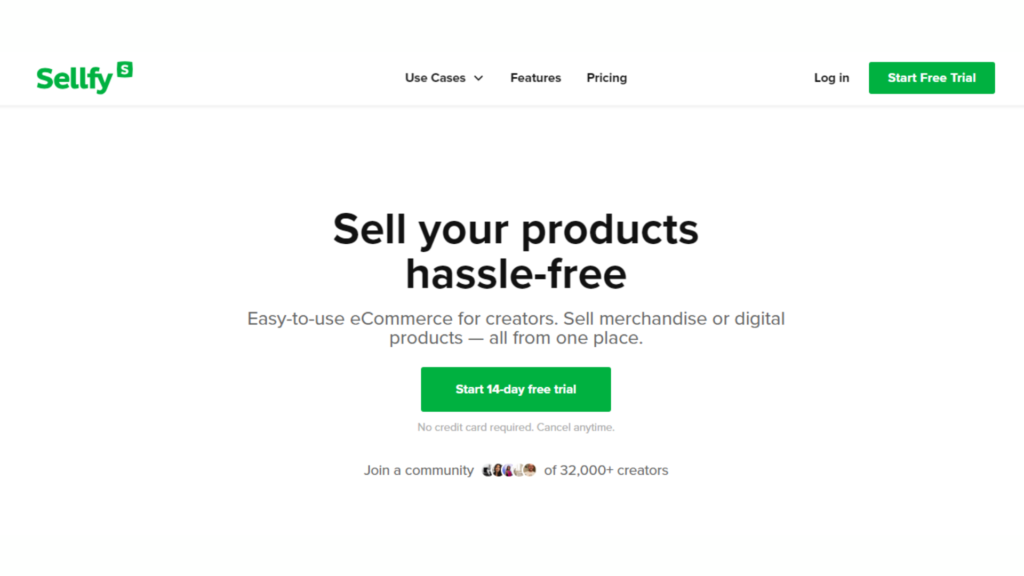In the bustling world of e-commerce, where dreams are packaged and sold in the blink of an eye, choosing the right platform to build your online store is akin to finding the perfect location for a brick-and-mortar shop.
It’s a decision that can set the tone for your business’s future. Today, we delve into an in-depth comparison of two frontrunners in the e-commerce platform race: Sellfy and WooCommerce.
Whether you’re an emerging entrepreneur or looking to expand your online presence, this guide is your beacon in the digital marketplace.
Table of Contents
Sellfy: Simplifying E-commerce for Creators

Sellfy is a cloud-based e-commerce platform designed with simplicity and ease of use in mind. It caters especially to creators and small business owners who want to sell digital products, physical goods, and subscriptions directly to their audience without the complexities often associated with setting up an online store.
Key Features and Benefits:
- User-Friendly Interface: Sellfy offers a straightforward, intuitive user experience, allowing even those with no technical background to set up their store quickly.
- Integrated Marketing Tools: The platform comes with built-in marketing features, including email marketing capabilities, discounts, and upselling options, helping sellers promote their products effectively.
- Direct Payments: Sellfy supports direct payments through PayPal and Stripe, facilitating immediate transactions without unnecessary delays or intermediaries.
- Customizable Storefront: While not as extensive as WooCommerce, Sellfy provides enough customization options to create a branded online store that resonates with your target audience.
Considerations:
- Subscription-Based Pricing: Sellfy operates on a subscription model, which means ongoing costs that can add up, especially for businesses at the scaling stage.
- Limited Customization: Compared to WooCommerce, Sellfy offers limited customization options, which might be a constraint for businesses with specific branding requirements.
WooCommerce: Powering Customizable E-commerce Solutions

WooCommerce is a flexible, open-source e-commerce plugin for WordPress. It’s designed for small to large-sized online merchants using WordPress. The platform’s strength lies in its scalability and customization capabilities, making it a popular choice for businesses planning to expand or tailor their online presence extensively.
Key Features and Benefits:
- Extensive Customization: With access to thousands of plugins and themes, WooCommerce offers unparalleled customization options, allowing businesses to fine-tune every aspect of their store.
- Scalability: WooCommerce can handle stores of any size, from a handful of products to thousands, making it an excellent choice for businesses with growth ambitions.
- Community Support: Being open-source, WooCommerce has a vast community of developers and users, providing a wealth of knowledge and support.
Considerations:
- Learning Curve: The extensive customization options and functionalities come with a steeper learning curve, requiring more time or technical knowledge to set up and manage effectively.
- Additional Costs: While the WooCommerce plugin itself is free, many extensions, themes, and hosting services are not, which can increase the overall cost of running a WooCommerce site.
Comparative Analysis: Sellfy vs. WooCommerce
1. Ease of Use:
Sellfy shines with its ease of use, allowing merchants to set up their storefront quickly without technical know-how.
WooCommerce requires more time to learn, especially for those without prior WordPress experience.
2. Customization and Flexibility:
WooCommerce offers a high level of customization, catering to businesses that require unique storefronts and specific functionalities.
Sellfy provides basic customization options, sufficient for those who prefer simplicity and speed over intricate designs.
3. Pricing and Ongoing Costs:
Sellfy’s subscription model means predictable, ongoing costs, which might be preferable for businesses seeking simplicity in budgeting.
WooCommerce, while free to start, can become more costly with additional plugins, themes, and hosting needs.
4. Target Audience:
Sellfy is best suited for creators, small businesses, and those selling digital products who value simplicity and quick setup.
WooCommerce is ideal for businesses of all sizes that require a customizable solution and plan to scale their operations over time.
FAQs
1. Can I sell both digital and physical products on Sellfy and WooCommerce?
Yes, both platforms support the sale of digital and physical products. Sellfy provides a streamlined process for selling both, while WooCommerce offers extensive customization for managing a diverse product range.
2. Which platform is better for beginners?
Sellfy is generally considered more beginner-friendly due to its straightforward setup process and ease of use. WooCommerce, while offering more advanced features, may require a steeper learning curve.
3. How do the costs compare between Sellfy and WooCommerce?
Sellfy operates on a subscription model with clear pricing tiers. WooCommerce is free to use, but costs can accumulate with additional plugins, themes, and hosting requirements.
4. Can I migrate my store from Sellfy to WooCommerce or vice versa?
Yes, migration is possible between both platforms, but the process can be complex. It may involve exporting and importing products, customer data, and other store elements. Professional assistance is recommended for a smooth transition.
5. Which platform offers better customer support?
Sellfy provides direct customer support through its subscription plans, while WooCommerce relies on community forums and third-party services for support. The choice depends on your preference for direct assistance vs. community-based solutions.
Conclusion
In conclusion, the choice between Sellfy and WooCommerce hinges on the specific needs and goals of your business. Sellfy offers an intuitive, user-friendly platform ideal for creators and small businesses looking to quickly set up their online presence without the need for extensive customization.
WooCommerce, on the other hand, caters to businesses of all sizes seeking a highly customizable and scalable solution, with the trade-off being a steeper learning curve and potentially higher costs.
Evaluating your business’s priorities—be it ease of use, customization, cost, or scalability—will guide you to the platform that best aligns with your vision for growth and success in the e-commerce world.
























